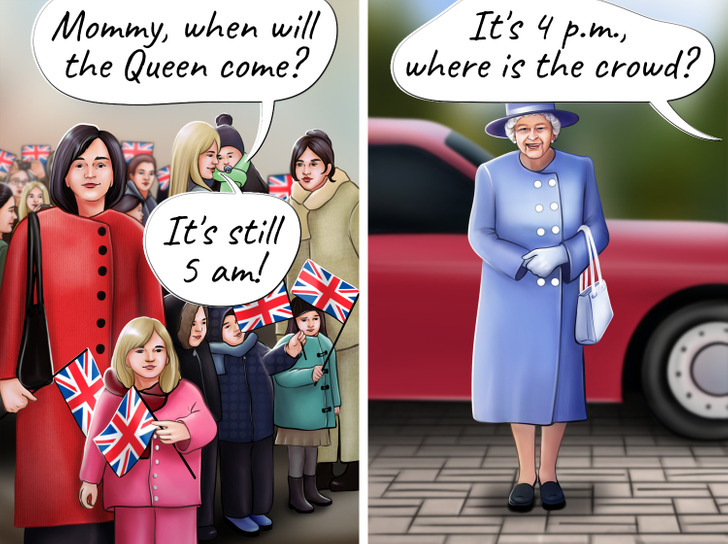What You Should Do If You Ever Meet the Queen

A protocol is a set of unwritten, proper guidelines or accepted courtesy rules about how an activity should be performed in the field of diplomacy. 45 nations in the world have monarchs as the heads of state. Every royal family operates under different rules, etiquette, and protocols.
5-Minute Crafts prepared this guideline to let you know what you should do if you ever meet the Queen of the British monarchy, which has a bonus section with some tips that apply to other royals across the world.
What to do if you meet the Queen of the British Monarchy
1. Curtsy or bow

Contrary to popular belief, there aren’t any obligatory codes when meeting the Queen or the royalty. Not everyone is required to bow or curtsy. For example, you don’t have to do it if you’re an American. Yet, if you’re a citizen of Great Britain or the Commonwealth, it’s good to curtsy out of affection and respect. When you meet the Queen, give her a short neck bow from the head or a proper curtsy where you need to place your right foot behind your left foot, and then do just a slight bob.
2. Never touch the Queen

3. Greet in the proper way

Use ’’Your Majesty’’ first and ’’Ma’am’’ afterward when addressing her. Take her lead. Ensure you speak when spoken to. Also, ensure to not initiate a conversation or ask any personal questions.
4. Arrive early

5. Know where you need to be seated

Sit to the right of the Queen if you’re a guest of honor. During the first course of the dinner, she speaks first to the person on her right, then switches to the person on her left in the following course. If you sit on her left, you can expect her to initiate a conversation. Begin eating when she does, and similarly, stop eating when she stops.
Bonus: A glimpse into other kingdoms across the globe
- Denmark: Danish royal christenings are also traditional baby naming ceremonies; royals don’t reveal a new baby’s name until their christening ceremony. All members hold the title of Prince or Princess of Denmark with the style of His or Her Royal Highness or His or Her Highness.
- Morocco: The Moroccan King prefers his hand to be kissed by the people. It is one of the essential royal etiquettes in Morocco.
- Sweden: In Sweden, princes and princesses have the title “His/Her Royal Highness.”
- Spain: For the Spanish royals, it’s okay to kiss one another on both cheeks.
- Belgium: As the usual courtesy, the Belgian royal family requires the shaking of hands. On presentation to His Majesty the King or to Her Majesty the Queen in a later conversation becomes “Your Majesty” for the King and “Your Majesty” or “Madam” for the Queen. Other royal family members are addressed as “Your Royal Highness.”
- Norway: In Norway, only the children of the monarch and the children of the heir to the throne and their spouses are referred to as “Your Royal Highness.” All the rest of the princes or princesses are addressed as “Your Highness,” which is different from the British royal family.
- The Netherlands: Even during the coronation, the King doesn’t wear a crown. He also doesn’t want to be called ’’Your Majesty."
- Japan: In Japan, bowing is a general cultural act for greeting, respect, etc. It would be best to bow when meeting anyone and those in a higher position or social standing. According to their royal protocol, a Japanese Princess gives up her royal roles and privileges if she marries a commoner.